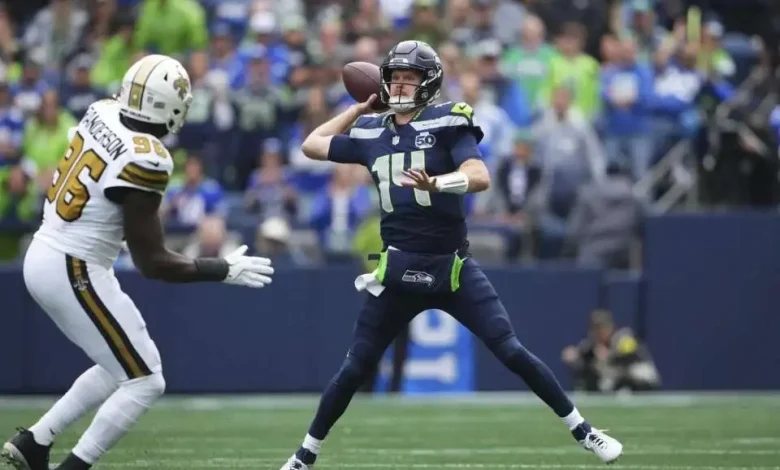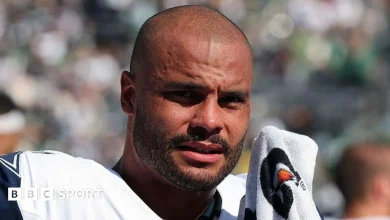How Klint Kubiak Made Sam Darnold Even Better

If you’ve been following my work, you know I had the Seattle Seahawks buried before the season even started. I thought they’d crash and burn with Sam Darnold under center and Klint Kubiak calling plays.
I figured Kevin O’Connell had already squeezed every ounce of juice from Darnold’s career in Minnesota, and that moving to Seattle, with fewer weapons and a worse defense, would expose him again.
I couldn’t have been more wrong. Darnold has been excellent, and Kubiak deserves a ton of credit for designing an offense that turns the team’s supposed weaknesses into strengths.
More NFL Content From TWSN
NFL Week 10 Power Rankings
Top 100 Players of the 2026 NFL Draft
The Washington Commanders Just Taught The NFL a Valuable Lesson
How Klint Kubiak Made Sam Darnold Even Better
Let’s start with what makes this Seahawks offense so strange, but effective.
At the core of Kubiak’s system is the run game. That sounds normal enough, until you realize that the Seahawks’ rushing attack is actually one of the worst in football.
They run the ball on nearly half their plays (49.7%, second-most in the league), but they rank second-to-last in Expected Points Added (EPA) per rush and yards per carry.
So why keep pounding the rock? Because Kubiak’s obsession with the run isn’t about efficiency, it’s about manipulation.
EPA, or Expected Points Added, measures how much each play improves a team’s scoring chances, adjusting for factors like down, distance, and field position.
By that metric, Seattle’s ground game hurts them on paper. But in practice, it sets up one of the most efficient passing attacks in the NFL.
The Seahawks (Darnold) rank sixth in completion percentage, first in yards per attempt, and third in passer rating. Darnold is thriving, even with a bad rushing attack.
The magic lies in personnel usage. Kubiak leans heavily on 12 personnel, which utilizes two tight ends, two receivers, and a running back, creating the illusion of a run-first offense.
When defenses load up to stop the run, Seattle turns those same looks into explosive passing opportunities. They lead the league in EPA per dropback when in 12 personnel, which means they’re getting maximum value out of their passing plays.
Defenses are forced to respect the threat of the run, even though it’s ineffective, because Seattle commits to it so consistently. That opens up passing lanes Darnold can exploit, especially downfield.
Oftentimes, they don’t have the run play action because the defense is already at a disadvantage with slower, bigger players on the field to stop the run.
But when they do call play action, it’s devastating. The Seahawks rank first in yards per attempt on play-action passes and complete nearly 69% of them.
Defenses simply can’t tell when Kubiak is going to let Darnold sling it or when he’ll hand it off, and that constant uncertainty keeps opponents off balance.
What’s most impressive is how this formula holds up when Seattle plays from ahead. With their heavy formations, they can drain the clock by running the ball, but still remain dangerous through the air. That dual threat, running often but passing efficiently, makes them a nightmare to defend late in games.
In the end, what looked like a mismatch of talent and scheme has turned into one of the NFL’s best marriages. Darnold has yet another play-caller who understands him, and Kubiak has built an offense that maximizes deception and efficiency rather than raw talent.
The Seahawks’ ground game might be statistically ugly, but it’s the foundation of everything that’s working in Seattle. I doubted them from the start, but this version of Darnold and Kubiak has made me eat my words, and maybe made the Seahawks real contenders again.





